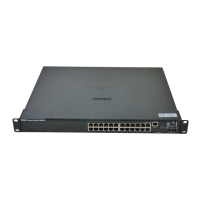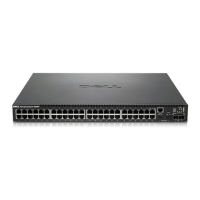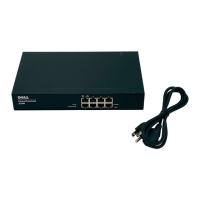The following options are available:
l SNMP Community Capability — Indicates that the switch supports up to five community strings.
l Community List — Displays a list of the community strings currently configured. Default strings are public (read-only access) and private (read/write
access).
l Community String — Allows you to name a new community. Community strings are case sensitive.
l Access Mode — Sets the access rights for the new community that you are creating. Access rights are either read-only or read/write.
To add an SNMP community, type the new name in the Community String box, select the access rights from the Access Mode drop-down menu, and then click
Add Community String. To delete a community, click the entry in the Community List, and then click Remove Community String.
CLI Commands
The following table summarizes the equivalent CLI commands for items in the SNMP/Communities page.
Example
Console(config)#snmp-server community private rw
Console(config)#
Traps
On the Traps page, you can specify management stations that receive authentication failure messages and other trap messages from the switch.
The following options are available:
l Trap Manager Capability — Indicates that the switch supports up to five trap managers
l Trap Manager List — Displays a list of the trap managers currently configured
l IP address — Specifies the IP address of a new management station to receive trap messages
l Community String — Identifies the community string for the new trap manager you are creating
To add a trap manager, type the new IP address in the IP Address box, type the appropriate SNMP community in the Community String box, and then click
Add Trap Manager. To delete a trap manager, click the entry in the Trap Manager List, and then click Remove Trap Manager.

